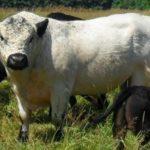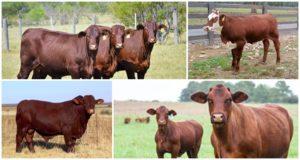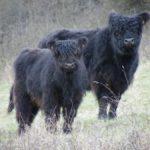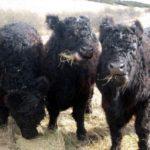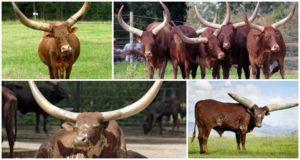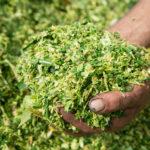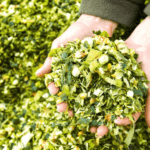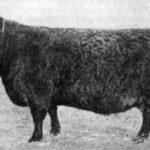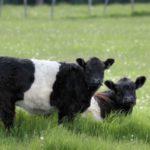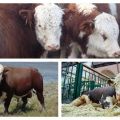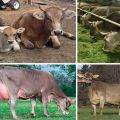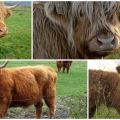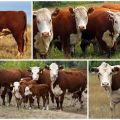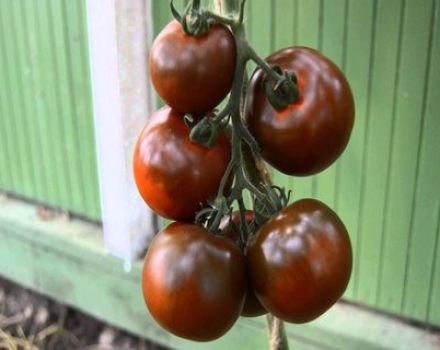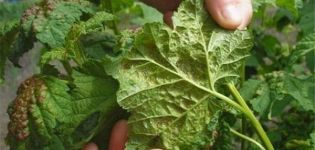Description and characteristics of cows of the Galloway breed, rules of keeping
Galloway cows are bred in Scotland. Breeding of this type of cattle is mainly engaged in for the sake of obtaining meat, since the mass of an adult bull reaches 850 kilograms, and a cow - 550 kilograms. Galloway animals are hardy, unpretentious, able to grow quickly in harsh conditions, they are characterized by ease of calving and affection for the herd. This makes the Galloway breed popular in many countries around the world.
The origin of the breed
The Galloway cattle breed belongs to the old types of cows that are raised for meat. Initially, in Scotland, in the county of Galloway (hence the name of the breed), the cattle had a meat and dairy direction, later it was changed to purely meat as a result of selection.
Livestock were raised in mountainous areas, in conditions of high humidity, cool summers and winters with little snow. The breed began to breed around 1850, and the Galloway Cow Breeding Society was later created. In 1878, the first part of the pedigree publication about Galloway cattle was published, 4 years later, a union of breeders of the breed was formed in Chicago. The largest amount of literature on the peculiarities of raising Galloway cows was also published there.
In Russia, not many farms are engaged in breeding Galloway cows; this type of cattle accounts for 0.6-0.8% of beef breeds. Finding the breeding stock - in the Altai experimental farm of the SB RAS.
Description and characteristics of Galloway cows
Galloway cattle outwardly resembles Aberdeen-Angus cattle, but differs in a longer and shallower body. The body of gobies and cows is covered with a thick dark hair (black or brown mixed with gray) color. In rare cases, calves are born with a light stripe on the body, pure beige or white.
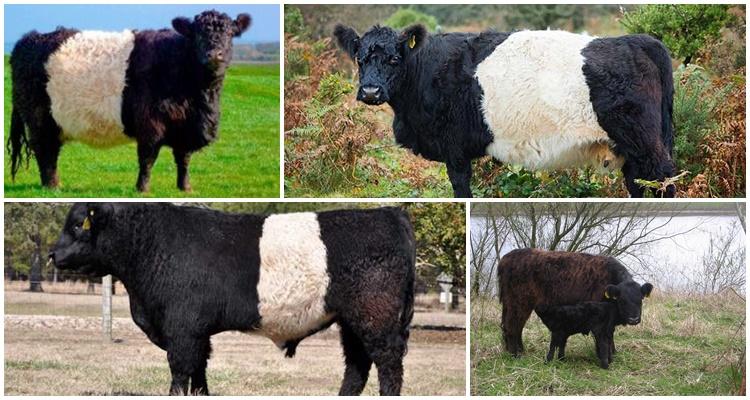
In winter, the thick and hard wool of Galloway animals reaches a length of 20-25 centimeters, so that the cows do not freeze in adverse climatic conditions. They can graze outdoors almost all year round. Galloway cattle are not afraid of rain, snow, wind.
In hot conditions, cows also do not experience discomfort, since wool perfectly performs thermoregulatory functions and does not allow the body to overheat.
Thanks to the constant grazing, the cattle has developed a powerful, muscular body with a strong constitution. The neck and chest are wide, the lumbar region is short, the back is straight. The legs are short, the hooves firm and firm. The head is hornless. In cows of the Galloway breed, calving is easy, maternal qualities are highly developed. The cattle are tied to the herd.
A calf at birth weighs 25-30 kilograms, adults reach a large mass:
- cows - 450-550 kilograms;
- bulls - 750-850 kilograms.
A one and a half year old goby weighs 400-450 kilograms under good conditions of keeping and feeding. Slaughter output of a fattened bull reaches 65%. Cow's milk gives up to 1500 liters per month with a fat content of about 4%.
Main positive and negative aspects
Cows of the Galloway breed, or, as they are popularly called, golovey cattle, have a lot of advantages:
- Endurance and undemandingness to special conditions. To keep the productivity of meat and milk at a high level, Galloway animals only need juicy food for a long time. The herd does not need to make special enclosures when grazing on pastures - the cows do not move further than a meter from each other.
- Lack of labor-intensive maintenance processes. It is important for cows to provide high-quality food and drink, to build the simplest structure of a stall to protect livestock from negative weather conditions.
- Fast calving. A cow's labor activity lasts, on average, 5-6 hours.
- Good compatibility with other breeds for industrial crossing.
- High quality of the meat obtained. The products are aromatic, tasty and soft, do not have excessive fat content, contain a large amount of polyunsaturated acids and nutrients.
- Good profit from the sale of dairy and meat products from Galloway cattle.
Galloway cows have practically no flaws, except that marble fibers slip in the meat located in the neck area. Other areas of the body are no different from other cattle breeds.
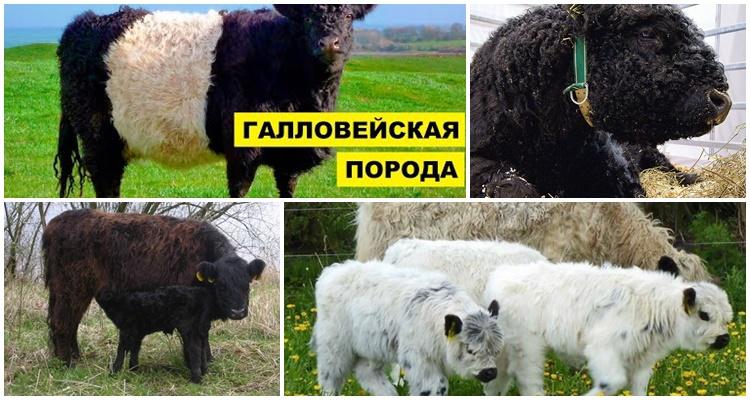
How to keep and care for animals
Despite the fact that Galloway cattle are unpretentious in food and maintenance, it is important to provide them with good care to maintain the health of the livestock and improve the quality of the products obtained.
Summer playground
In summer, cows spend most of their time in the pasture. It is necessary to equip them with premises that will protect livestock from hot sunlight, rain and wind. Milking pens should be present on the summer area, although cows do not produce much milk.
Room arrangement
Special rooms are required for cows in extreme cold conditions, especially for recently calved individuals. One head must have at least 3.5-3.75 square meters of a separate stall with a ceiling height of 2.5 meters. The floor is covered with a thick layer of sawdust or chopped straw. The barn should have drinkers and feeders (automatic or manual filling). Coarse and wet feed must be placed in separate feeders.
Conditions of detention
In barns, it is important to provide good ventilation and protect animals from drafts. The temperature regime is not very important, but the humidity in the room should be within 70%. Cows need 16 hours of light with an 8 hour sleep break in the dark.
Regular cleaning of the stall and equipment
Galloway breeds have good immunity, but hygiene standards must be observed. The room is cleaned of manure twice a day; it is recommended to replace the flooring as it gets dirty. It is important to ensure that no feed remains are left in the feeders. The water in the drinking bowls must be constantly changed to fresh water, if they are not automated and connected to the central water supply.
When cleaning premises, the use of disinfecting detergents is required to prevent infectious diseases of cattle.
What to feed
Galloway cows are unpretentious in food, but to maintain health, strong immunity and high quality meat and dairy products, all feed must be fresh. Only proper nutrition will allow cattle to quickly gain muscle mass and give good milk yield (up to 30-50 liters of milk per day).
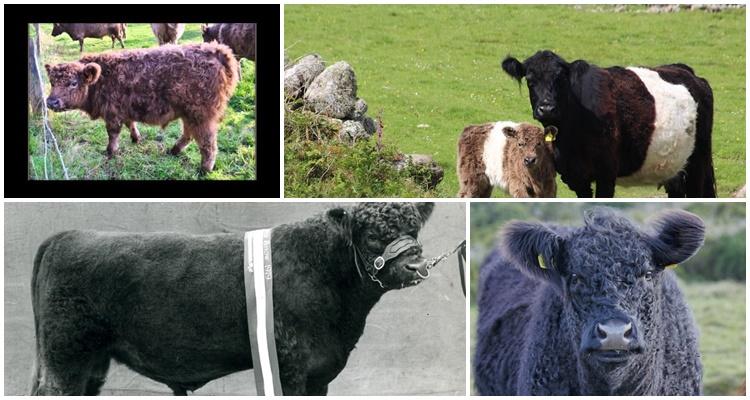
Summer
In the summer, Galloway cows are fed high-quality compound feed twice a day, but the main diet consists of succulent grasses, which the cattle consume on pasture.
It is important to inspect the area for the growth of poisonous herbs such as henbane, marsh wild rosemary and calla, speckled hemlock, and warty euonymus.
In winter
In winter, when the cows are on the farm, it is necessary to provide them with a high-quality diet, consisting of the following products:
- dry hay;
- compound feed based on barley, wheat, oats;
- peas, beans, soy;
- feed yeast;
- fish fat;
- wood ash;
- bran;
- potatoes and beets;
- fish fat.
The intervals between meals in winter are 3-5 hours. When feeding in the morning, livestock must be fed in the form of herbs to start metabolic processes and improve the digestion of roughage (legumes and cereals).
Specialized feed should not be mixed with antibiotics and growth stimulants. Due to the high amount of hormonal substances in such additives, irreversible pathological changes are formed in the body of livestock, the quality of meat and milk deteriorates.
Water
In summer, one cow drinks up to 60 liters of water per day, in winter - up to 35 liters. The amount of liquid needed depends on the type of feed received, the presence of a calf in the cow and other factors. It is better to install automatic drinkers for cattle, in their absence it is necessary to drink clean water three times a day, no colder than 15 aboutFROM.
Breeding subtleties
Cows begin to calve at the age of 32-34 months. Calving lasts about 5-6 hours. In animals of the Galloway breed, there are rarely cases of difficult calving and stillbirth of young animals. A newborn bull calf weighs about 20 kilograms, a heifer - 8-10 kilograms. Before calving, it is important to provide fresh flooring and sufficient clean water.
On the farm, calves up to 7-8 months old are reared in full suction according to the resource-saving cow-calf system. Upon reaching 7-8 months of age, the calves are beaten off from their mothers, herds are formed taking into account the gender. After beating, the young are weighed, and the milk production of cows is calculated - one of the most important selection indicators in beef cattle breeding.
Diseases and their treatment
Galloway cows are long-livers due to their strong constitution and endurance in almost all weather conditions. Like other breeds, Galloway cattle can carry the following diseases:
- blockage of the esophagus - occurs from the stuck in it of poorly chewed feed, especially not chopped vegetables. In simple cases, 100-200 milliliters of vegetable oil is poured into the cow's throat;
- tympania - overflow of the rumen with gases that do not have the ability to exit. To alleviate the condition, the animal is massaged the abdomen, rhythmically stretched out the tongue, bridged with a rope soaked in tar. In a difficult case, the veterinarian pierces the scar and releases gases out;
- atony - the absence of contractions of the proventriculus when overfeeding or serving stale food. Treated with castor oil and Glauber's salt;
- diarrhea - develops more often in calves with a violation of the feeding regime or the supply of stale, acidified milk. The calf is transferred to a dairy-free diet, in severe cases, detoxification measures are carried out, dehydration is stopped;
- broncho-pulmonary diseases - young animals are prone to being in conditions of dampness and drafts.It is treated under the supervision of a veterinarian, antibiotics, anti-inflammatory drugs, vitamins and immunomodulators can be used.
With poor quality nutrition, cattle care, violation of hygiene standards, the herd can be infected with foot and mouth disease, tuberculosis, brucellosis. It is important to conduct animal examinations and routine vaccinations.
If the rules of keeping and caring for livestock are followed, the meat and milk of Galloway cows will always keep a high market value. The breed has many advantages, is unassuming in food, quickly gains body weight, and meat products are characterized by excellent taste and quality.

